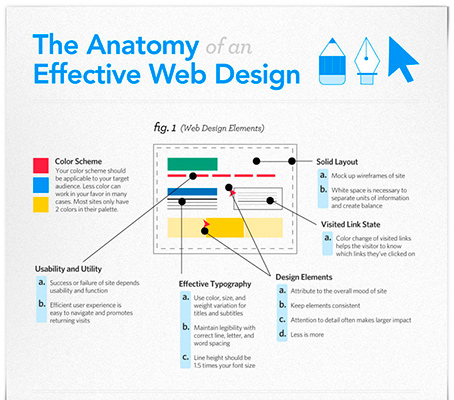The Development Of Web Site Style: From Past To Present
The Development Of Web Site Style: From Past To Present
Blog Article
Content Written By-Thorsen Trolle
In the past, sites were simple and concentrated on info. https://www.business2community.com/digital-marketing/4-tips-for-a-strategic-cpg-digital-marketing-campaign-and-the-trends-to-back-them-up-02443305 was direct, and layout was for desktop computers. Currently, customer experience is crucial. Data guides designs for simple navigating. Responsive layouts fit various gadgets. Today, dark setting lowers pressure, and minimal food selections improve navigation. Interactive features involve users, and strong visuals stick out. AI integration improves interaction. See just how style has actually evolved to boost your on the internet trip.
Early Days of Website Design
In the early days of web design, simpleness preponderated. Internet sites were basic, with limited colors, fonts, and layouts. The emphasis got on giving info rather than flashy visuals. Individuals accessed the internet through sluggish dial-up connections, so rate and capability were key.
Navigation menus were straightforward, typically situated at the top or side of the page. Internet sites were developed for computer, as mobile surfing wasn't yet common. Web content was king, and developers prioritized very easy readability over complicated layout components.
HTML was the key coding language made use of, and designers had to function within its restraints. Computer animations and interactive functions were minimal compared to today's standards. Sites were static, with little vibrant material or personalized individual experiences.
Rise of User-Focused Style
With the advancement of internet site layout, a change in the direction of user-focused layout principles has actually ended up being significantly popular. Today, creating websites that prioritize customer experience is critical for involving site visitors and attaining organization goals. User-focused layout entails understanding the requirements, choices, and behaviors of your target audience to customize the internet site's format, web content, and features appropriately.
Designers now carry out extensive research, such as customer studies and usability screening, to collect insights and responses straight from customers. This data-driven approach aids in creating user-friendly navigation, clear calls-to-action, and visually enticing user interfaces that reverberate with site visitors. By putting the individual at the facility of the style process, web sites can deliver a much more personalized and satisfying experience.
Receptive style has actually additionally emerged as an essential aspect of user-focused design, guaranteeing that web sites are enhanced for numerous devices and screen dimensions. This adaptability boosts ease of access and functionality, dealing with the varied methods customers engage with web sites today. In essence, the rise of user-focused design signifies a change towards producing digital experiences that prioritize the needs and assumptions of the end customer.
Modern Trends in Website Design
Check out the current trends shaping web design today. One noticeable trend is dark mode layout, using a streamlined and modern appearance while minimizing eye stress in low-light atmospheres. One more vital fad is minimalist navigating, simplifying food selections and boosting user experience by focusing on essential elements. Incorporating micro-interactions, such as computer animated buttons or scrolling impacts, can develop a more appealing and interactive web site. Receptive layout remains crucial, ensuring smooth customer experiences across numerous gadgets. Additionally, utilizing strong typography and unbalanced layouts can add aesthetic passion and draw attention to specific material.
Integrating AI technology, like chatbots for customer assistance or tailored suggestions, boosts individual interaction and streamlines processes. Accessibility has likewise become a substantial trend, with developers prioritizing comprehensive style methods to accommodate varied customer needs. Welcoming sustainability by enhancing website performance for rate and performance is another emerging pattern in website design. Teaming up with customer feedback and data analytics to repeat and improve design continually is vital for staying pertinent in the ever-evolving electronic landscape. By accepting these modern-day trends, you can develop a visually attractive, easy to use website that resonates with your target market.
visit the following internet site
As you review the development of site style from the early days to now, you can see just how user-focused design has come to be the driving pressure behind contemporary fads.
Embrace the trip of modification and adaptation in web design, always maintaining the individual experience at the leading edge.
Tippingpointdigital
Keep existing with the most recent patterns and modern technologies, and never quit evolving your approach to produce visually sensational and easy to use sites.
Advance, adapt, and develop - the future of web design is in your hands.
